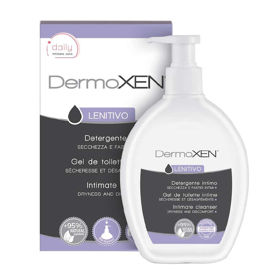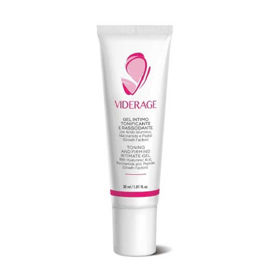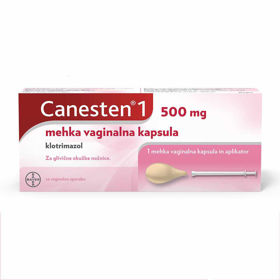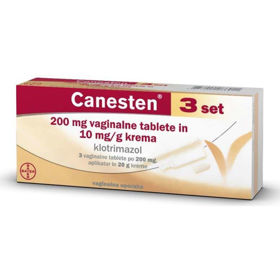Customer question:
I have a white, thick discharge coming out of my vagina. I also have itching... What could it be, and what can I do to help? Question from an anonymous customer
Pharmacist's answer:
You are most likely dealing with candidiasis. Candidiasis is an infection caused by a yeast (type of fungus) called Candida Albicans. Candida usually lives on the skin and the body, for example, in the mouth, throat, intestines, and vagina, without causing any particular problems.
Candida can cause an infection if conditions in the vagina change and stimulate its growth. In addition, hormones, medications, or changes in the immune system often increase the likelihood of infection. The common term for vaginal candidiasis is a vaginal yeast infection.
Symptoms of a yeast infection can be mild to moderate and include:
- itching and irritation in the vagina and vulva
- burning sensation, especially during intercourse or urination
- redness and swelling of the vulva
- vaginal pain
- vaginal rash
- thick, white, odorless vaginal discharge
- watery vaginal discharge
Yeast overgrowth can be caused by the following:
- use of antibiotics that cause an imbalance of the natural vaginal flora
- hormone therapies that increase estrogen levels
- taking oral contraceptives
- uncontrolled diabetes
- weakened immune system
- hormone imbalance
- pregnancy
You will use antifungal medications to treat vaginal candidiasis. Often, the antifungal medicine is applied inside the vagina or as a single oral dose of fluconazole.
You may need other medicines if your infection is:
- worse than at the beginning of the treatment
- static and not improving
- recurring after treatment
These treatments include:
- multiple doses of fluconazole taken orally
- other drugs used inside the vagina, such as boric acid, nystatin, or flucytosine
In addition to treatment, you can also help yourself at home. Some suggestions for home treatment and relief of vaginal candidiasis are mentioned in the lines below.
Tea tree essential oil
Tea tree essential oil has long been valued for its cleansing properties. However, in most reviewed studies, tea tree oil was tested against Candida albicans, one of the most common yeasts in vaginal infections.
Using products with tea tree essential oil for vaginal use makes sense.
Food supplements with live bacteria
Some supplements can be a natural solution and supportive therapy for a yeast infection. In addition, some supplement brands sell specially formulated products for women's reproductive health. Their purpose is to restore the balance of bacteria and yeast in the vagina.
Coconut oil
Coconut oil has cleansing and soothing properties. Raw organic coconut oil can relieve symptoms inside or outside the vagina. Warmed coconut oil can also be a carrier for more potent essential oils, including tea tree or oregano oil.
Coconut oil is an established regenerative agent. Although research on its use in yeast infections is limited, evidence suggests this approach might work.
Interesting reading: Baking soda bladder inflammation
Interesting reading: What antibiotic for bladder inflammation













